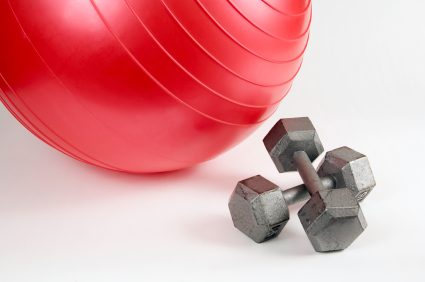Give yourself a natural chest lift
Strengthening and building the chest muscles will help perk up the surrounding tissue, too. Here’s how to do it

Source: Web exclusive: January 2011
One of the many realities of aging is the effect gravity has on the chest tissue. Training the chest won’t make you bulky or look like a body builder if the weights are chosen correctly; instead, training the chest will help give you a fit and contoured appearance in this area.
Anatomy lesson
The Pectoralis (Pecs) muscles are located at the front of the rib cage. There are two portions to the Pecs, the Pectoralis major and minor.
The Pectoralis major stems from two heads (think of a wish bone) that merge together and become one. The clavicular head arises from the middle two-thirds of the collarbone. The sternocostal head arises at the top of the breastbone and runs down along the cartilage of the upper six ribs. Both heads attach to the joint of the upper arm (humerus).
Functions:
‘ Brings the arm across the body (adduction)
‘ Moves the arm straight up (flexion of the shoulder joint)
‘ Moves the arm straight back behind the body (extension of the shoulder joint)
‘ Rotates the shoulder joint medially
The Pectoralis minor is located under the Pectoralis major and is triangular in shape. The Pec minor originates along the breastbone (sternum) down to the fifth rib and inserts onto the coracoid process of the scapula.
Functions:
‘ Movement of the shoulder blade, forward and downward
‘ Pulls the shoulder down (depression)
The routine
Do the suggested chest-firming exercises 1 to 2 times per week, 10-12 repetitions each for 2-4 sets for optimal results. Rest 30-45 seconds between each set.
Varying the angles at which the chest muscles are trained will place a different stress on each of the fibres within this fan-shaped muscle. Using a variety of exercises to strike each angle will stimulate proportionate and symmetrical growth of the chest muscle, which will result in a natural lift.
To change the angle of the muscle fibres you are working, change the angle of the bench.
Option 1: Flat bench with knees bent and feet on the bench.
Option 2: Bench at a 45-degree angle, head higher than feet.
Option 3: Flat bench with a riser or lift placed under the legs of the end your feet are on.
What you need: Adjustable bench, dumbbells and a ball.




